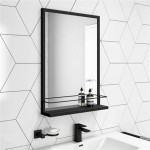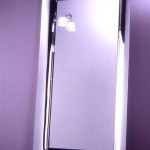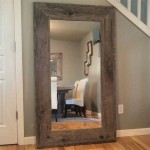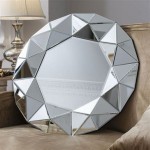Mirror Ceiling Tiles: Reflecting Light and Style
Mirror ceiling tiles offer a unique way to transform a space, adding a touch of elegance and drama while enhancing light and creating an illusion of spaciousness. Whether used in residential or commercial settings, these tiles provide a versatile design element with various practical and aesthetic benefits. Understanding their characteristics, installation process, and appropriate applications can help maximize their impact and ensure a successful installation.
Material and Construction
Mirror ceiling tiles are typically constructed from lightweight acrylic or glass mirrored onto a backing material. Acrylic mirror tiles are a popular choice due to their lightweight nature, shatter-resistance, and ease of installation. They are also generally more affordable than glass options. Glass mirror tiles, while more fragile, offer a higher-quality reflection and a more authentic mirror look. The backing material can vary, often consisting of polystyrene or other lightweight, rigid substrates that provide stability and ease of handling.
The tiles are available in various sizes and shapes, ranging from standard square and rectangular tiles to more intricate designs. This variety allows for customizable patterns and layouts to suit different aesthetic preferences and ceiling configurations. Some manufacturers also offer beveled edges, adding a touch of sophistication and creating a more defined look when installed.
Installation Process
Installing mirror ceiling tiles is a relatively straightforward process, often achievable with basic DIY skills. However, careful planning and preparation are essential for a successful outcome. The ceiling surface must be clean, dry, and level before installation begins. Any imperfections or unevenness in the ceiling will be magnified by the reflective surface of the tiles.
Adhesive is the most common method of attaching mirror tiles to a ceiling. Specialized mirror adhesives are available and are recommended for ensuring a secure and long-lasting bond. It's crucial to apply the adhesive evenly to prevent tile warping or detachment. Some tiles may also come with self-adhesive backing, further simplifying the installation process.
For suspended ceilings, specialized clips or hangers can be used to secure the tiles to the grid system. This method provides a cleaner finish and allows for easy access to the space above the ceiling if needed. Regardless of the installation method, accurate measurements and careful placement are crucial to achieving a seamless and professional look.
It’s important to note that working overhead can be physically demanding. Appropriate safety precautions, such as using a stable ladder or scaffolding and wearing eye protection, are essential throughout the installation process.
Applications and Design Considerations
Mirror ceiling tiles can be incorporated into a variety of spaces, both residential and commercial. In residential settings, they are often used in bathrooms, hallways, and smaller rooms to create the illusion of larger space and enhance natural light. They can also add a dramatic touch to dining rooms or entertainment areas, reflecting light and creating a sense of grandeur.
In commercial settings, mirror ceiling tiles are frequently used in restaurants, bars, and nightclubs to enhance ambiance and create a visually stimulating environment. They can also be incorporated into retail spaces to highlight displays and create a more engaging shopping experience. Dance studios and gyms can also benefit from mirrored ceilings, providing visual feedback for students and athletes.
However, it's important to consider the overall design scheme and the potential drawbacks before installing mirror ceiling tiles. Overuse can sometimes create a dizzying or overwhelming effect. Careful planning and strategic placement are essential to avoid a cluttered or visually jarring look. The reflective nature of the tiles also means they will amplify any imperfections in the ceiling or surrounding décor. Thus, thorough preparation and a well-maintained space are crucial for maximizing the aesthetic benefits of mirror ceiling tiles.
Maintenance and Cleaning
Maintaining mirror ceiling tiles is relatively simple. Regular dusting with a soft, dry cloth will help prevent the buildup of dust and maintain their reflectivity. For more stubborn marks or fingerprints, a gentle glass cleaner can be used. Avoid abrasive cleaners or harsh chemicals, as these can damage the mirrored surface. Regular cleaning will ensure the tiles continue to enhance the space and provide the desired visual effect.
When cleaning, it’s important to avoid excessive pressure, especially with acrylic tiles, as they can be more prone to scratching than glass. A microfiber cloth is ideal for cleaning as it leaves minimal lint and streaks. For high ceilings, a telescoping duster or cleaning tool can be helpful in reaching the tiles safely and effectively.

Udecor Mirror 2 Ft X Silver Lay In Ceiling Tile 40 Sq Case Gs 001 The Home Depot

Mirror Ceiling Tile

Glass Less Mirror Ceiling Tiles 2 X 4 Drop In Grid Suspended

Strong Mirror Ceiling Tiles For High End Reflective Isc

Mirror Ceiling Tile For Sensory Rhino

Strong Mirror Ceiling Tiles For High End Reflective Isc

Glassless Mirror Ceiling Panel From Rose Brand

Glassless Mirror Ceiling Tiles En Pointe Enterprises

Hexagon Mirror Tiles Dark Glam Bananas O Robin Clark

Mirror Tile Silver








